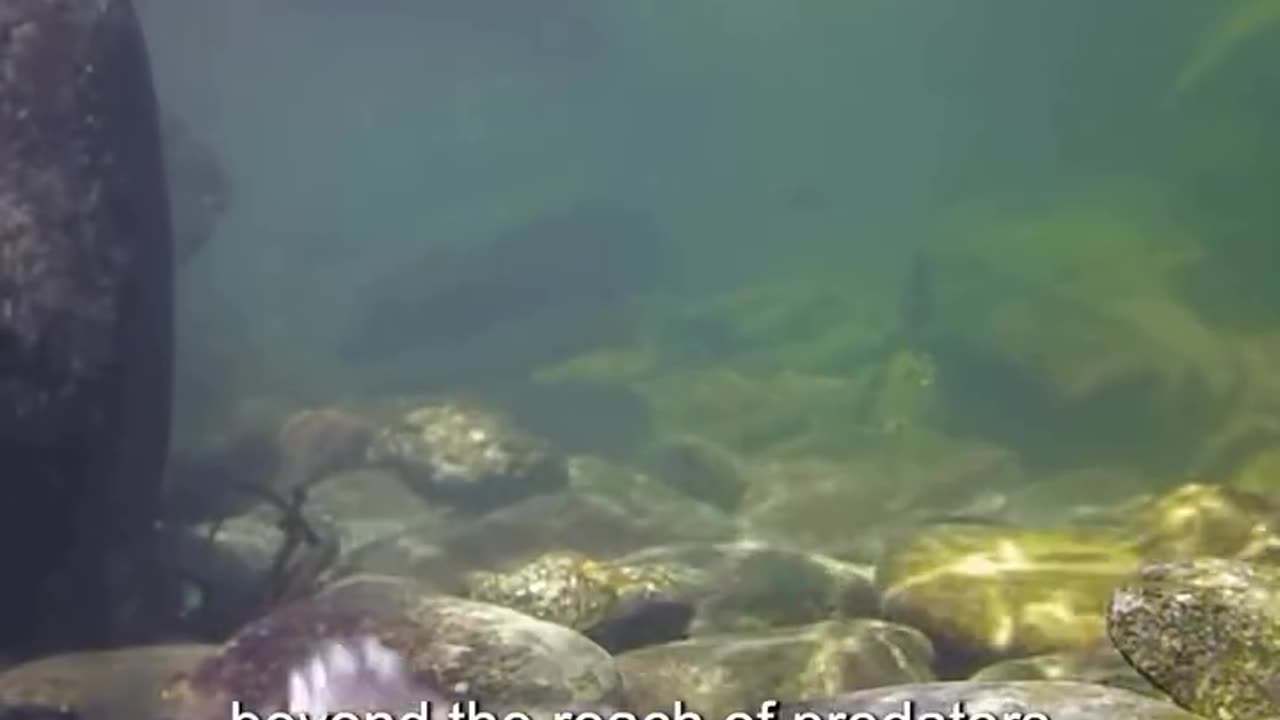Premium Only Content

The river chub 🐟
The river chub (Nocomis micropogon) is a species of freshwater ray-finned fish belonging to the family Leuciscidae, commonly found in North American streams. It is a robust minnow, typically dark olivaceous above and dusky yellow below, with orange-red fins, large scales, a large slightly subterminal mouth, and a small barbel at the corners of the jaw. The river chub grows to a maximum of about 33 centimetres (13 in), with males generally larger than females, and a common length of approximately 13.5 cm (5.3 in).
Its range extends primarily through the Great Lakes and Appalachian regions, inhabiting clear, medium to large creeks and rivers with moderate to swift currents over rock and gravel substrates. The river chub is considered widespread and abundant, though it is ranked as Critically Imperiled in Illinois, Imperiled in Alabama, and Vulnerable in Georgia. Populations in Ohio have been extirpated in some areas due to turbidity and siltation, and are threatened by acid mine drainage.
The river chub is an important indicator of water quality, as it is intolerant of pollution, turbidity, and siltation, and requires a minimum pH of 6.0. It plays a vital ecological role by serving as a host for freshwater mussel glochidia, which encyst on its gills and metamorphose into juveniles before dropping off. It also provides spawning habitat for several other minnow species, including those in the Clinostomus, Luxilus, Lythrurus, Notropis, Chrosomus, Rhinichthys, and Semotilus genera.
During the breeding season, sexually mature males develop distinctive features, including pinkish-purple coloration, swollen heads with tubercles between the eyes and snout tip (earning them the nickname "hornyheads"), and small tubercles on the outer part of their first pectoral fin rays. Breeding occurs in late spring when water temperatures reach 16–19 °C (61–66 °F), and males build pebble nests by creating a shallow depression and constructing a circular mound with a central trough on the upstream slope, using up to 10,000 pebbles. These nests are used by females to lay eggs, which hatch in 5–6 days, and juveniles reach 19 mm (0.75 in) in length within about 57 days.
The river chub is prey for larger fish and is used as bait by anglers targeting game fish like bass and catfish. Its diet primarily consists of aquatic invertebrates, with insects making up about 70% of its food volume, followed by plants or protists (20%), crustaceans (5%), and mollusks (4%). It has been observed to feed on the gelatinous masses released by mussels, which contain glochidia.
The river chub lives up to 5 years, reaching sexual maturity in its second year. It is generally considered widespread and abundant, though threats include pollution, siltation, and habitat destruction from dam building, which can eliminate spawning habitat and disrupt sediment flow. In areas like the Swatara Creek in Pennsylvania, which was once devoid of fish due to acid mine drainage, the return of the river chub has been a sign of successful environmental restoration.
-
 LIVE
LIVE
Total Horse Channel
2 hours ago2025 Quarter Horse Congress * Celeste Center * Tuesday September 30th
70 watching -
 1:00:17
1:00:17
SGT Report
12 hours agoEND GAME: SILVER & GOLD ALL-TIME HIGHS -- Bix Weir
19K16 -
 LIVE
LIVE
Matt Kohrs
11 hours agoGovernment Shutdown, Stocks on Tilt & Live Trading Market Open
549 watching -
 LIVE
LIVE
Wendy Bell Radio
5 hours agoDemocrats Play Government Shutdown Chicken
7,191 watching -
 LIVE
LIVE
Barry Cunningham
11 hours agoBREAKING NEWS: PRESIDENT TRUMP AND PETE HEGSETH MAKE HUGE ANNOUNCEMENTS!
2,615 watching -
 25:11
25:11
Tucker Carlson
21 hours agoThe 9/11 Files: The Cover-up Commission | Ep 2
119K34 -
 LIVE
LIVE
LFA TV
11 hours agoBREAKING NEWS ALL DAY! | TUESDAY 9/30/25
1,842 watching -
 1:09:10
1:09:10
Game On!
22 hours ago $2.30 earnedFINALLY! MLB Postseason IS HERE!
57K6 -
 10:29
10:29
Ken LaCorte: Elephants in Rooms
19 hours ago $3.78 earnedWhy Did Britain Protect Child Molesters?
56.9K32 -
 8:19
8:19
Adam Does Movies
1 day ago $1.51 earnedOne Battle After Another - Movie Review
27.8K2